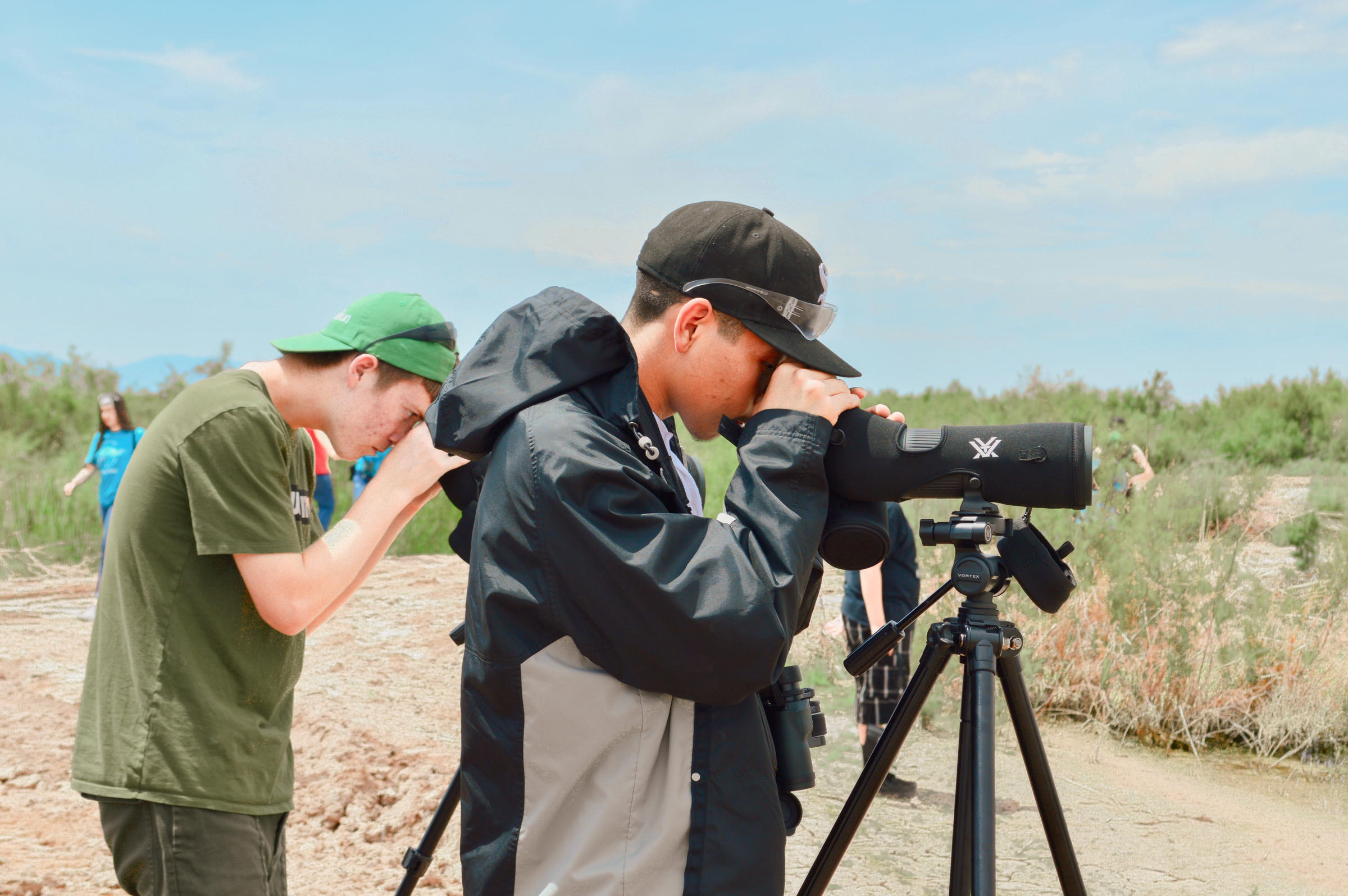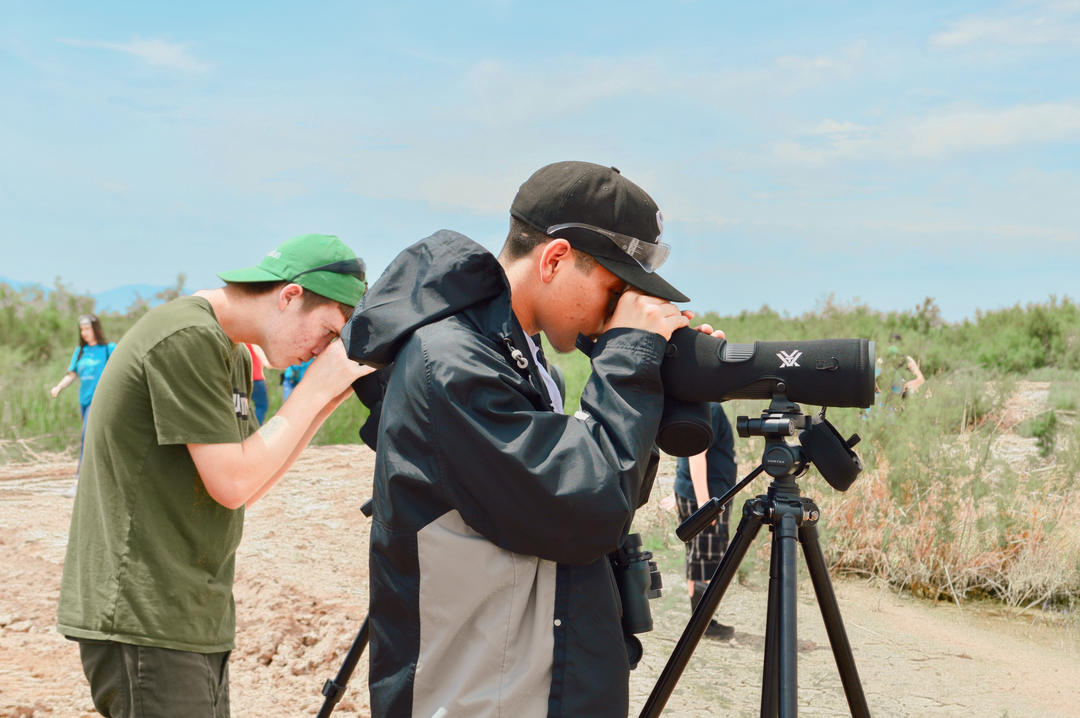The Eyes on the Sea program engages communities around the Salton Sea in protecting human health and conserving critical bird habitat.
This year, Audubon California worked with a group of 13 high school students from Indio High, a large community in Coachella’s “East Valley” region, about 20 minutes from the Sea. These students are members of the school’s environmental club and/or taking courses that touch on Salton Sea topics, like Geology and Biology.
Over the course of 12 weeks, short informational sessions were held during the club’s meetings. Armed with basic knowledge about the Salton Sea's geography, ecology, and environmental justice issues, the students went on three field trips to different parts of the Sea, and five students visited the State’s capital for Audubon’s Advocacy Day to meet with legislators to share their experiences as members of a community being affected by the drying of California’s largest body of water.
The field trips focused on different aspects of biological investigation, the sustainable energy at the Sea, and of course, birding. On the first field trip, students learned to take soil samples and test for pH as well as soil nutrients at three different sites around the Sea. The second field trip focused on testing water for pH and dissolved oxygen at two different sites around the Sea. The third field trip toured the Featherstone Geothermal plant on the south end of the Sea, as well as the Sonny Bono Wildlife Refuge. Finally, five students visited Sacramento State Capitol to participate with chapter members and fellow high school students to advocate for birds and the environments that they share with human communities.
Audubon is currently developing a methodology for water invertebrate sampling at the Salton Sea, which will give us greater insight into the state of the Sea as it experiences the environmental pressures of lowering water levels, increasing salinity, and the global effects of climate change on already vulnerable ecosystems. For the 2019-2020 school year, the Eyes on the Sea program will focus the program more narrowly to include participants in the collection of data for the water invertebrate sampling. The students will learn how to use water quality monitoring devices and interpret the results.
The students' direct involvement in data collection gives them new skills that will support them in their studies and broadens their perspective as members of a community being affected by environmental concerns at the Salton Sea
The Eyes on the Sea program is supported in part by:
NextEra Energy Foundation
Western Wind Foundation
Skyscrape Foundation








